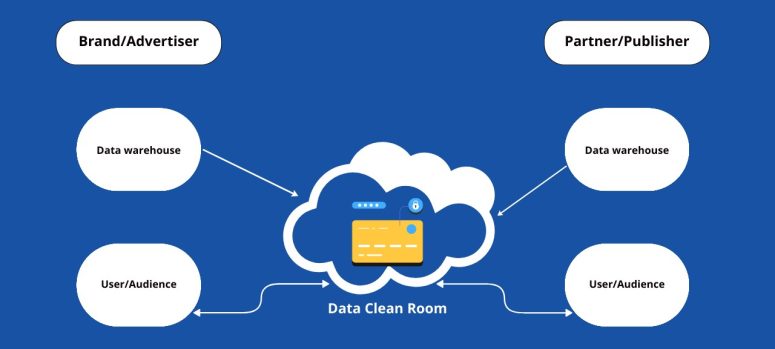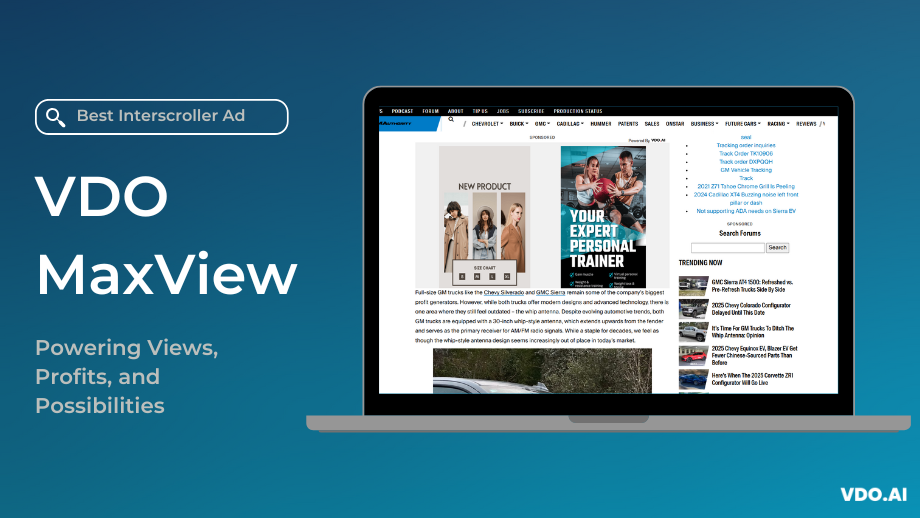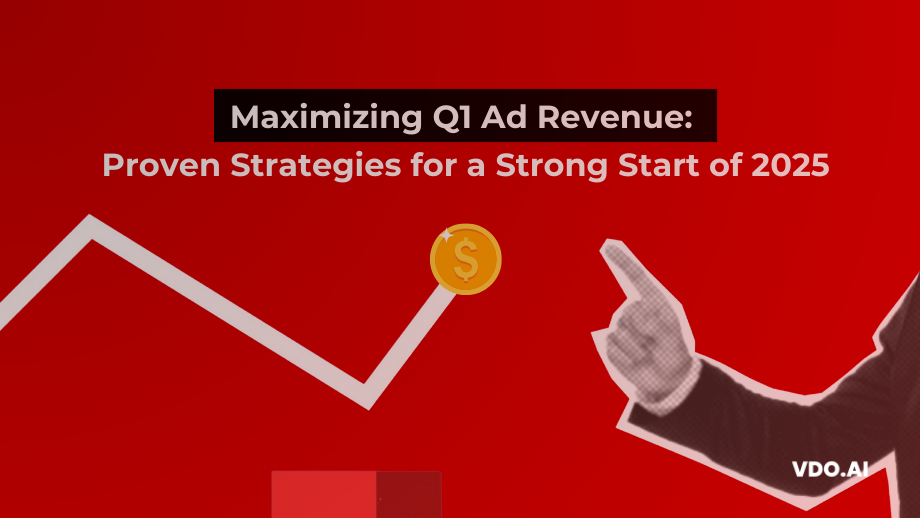Publisher’s Guide to Navigating the Challenges of a Privacy-First World
Reading Time: 5 minutesThe digital advertising landscape is undergoing a major upheaval as users demand more transparency and control over their data. With browsers phasing out third-party cookies and regulations like GDPR and CCPA emphasizing user privacy, publishers must adapt to this new privacy-first paradigm to sustain their businesses.
This transition poses significant challenges but also opens up new opportunities for publishers to strengthen trust and loyalty with their audience.
In this blog post, we’ll explore the key steps publishers should take to thrive in the privacy-first world.
Understanding the Challenges of Third-Party Cookie Removal
For years, third-party cookies have been the backbone of digital advertising, enabling publishers to track users across sites and serve targeted relevant ads. However, growing privacy concerns have led browsers like Chrome, Safari, and Firefox to block third-party cookies.
This poses three major challenges for publishers:
1. Reduced ad targeting capabilities: Without cross-site tracking, publishers have limited data to create granular audience segments to display targeted ads.
2. Loss of ad revenue: Less targeted ads mean lower click-through and conversion rates, leading to reduced ad revenue for publishers.
3. Walled Gardens advantage: With large troves of first-party data, walled gardens like Google, Facebook, and Amazon have an edge in behavioral targeting over other publishers.
Building a First-Party Data Strategy for Privacy First-World
To overcome these challenges, publishers need to reduce their reliance on third-party data and build direct relationships with their users through first-party data strategies.
First-party data refers to the user information that publishers collect directly from their own platforms:
– Registration and subscription data: Email, name, address, interests, demographics, etc.
– Site/app activity: Content views, clicks, searches, transactions, video watch time, etc.
– Loyalty programs: Preferences, purchase history, and engagement data from logged-in users.
The key steps involved in implementing a first-party data strategy are:
1. Auditing existing data: Conduct an audit of all the first-party data you already have access to – such as CRM data, web analytics, customer surveys, purchase history, etc. Identify any gaps in customer and prospect data.
2. Setting up ethical data collection: Use consent management platforms to gain user permission before collecting data. Collect first-party data ethically via registrations, customer interactions, surveys, consensual tracking, and other channels.
3. Connecting data across touchpoints: Implement a Customer Data Platform to create unified customer profiles by connecting first-party data across your website, mobile app, social media channels, offline interactions, and other touchpoints.
4. Applying data to improve experiences: Leverage first-party data to personalize content, product recommendations, pricing, customer service interactions, and other experiences for each customer and prospect.
5. Activating data for advertising: Utilize first-party data for audience segmentation, contextual targeting, measurement, and optimization of digital advertising. This reduces reliance on third-party cookies.
Following these key steps will enable publishers to build a robust first-party data strategy that respects user privacy while still fostering personalization and improving marketing performance.
Strengthening User Relationships with Trust and Transparency
Beyond just collecting more first-party data, publishers also need to prioritize trust, transparency, and consent to assuage user concerns about privacy. Here are some best practices to employ:
1. Show purpose and use cases: Clearly explain how you collect, use, and protect user data through easy-to-understand privacy policies and consent flows.
2. Provide user control: Give users granular controls to manage preferences and opt out of specific data usage. Avoid pre-checked opt-in boxes that undermine consent.
3. Limit unnecessary tracking: Only collect user data that you can justify and actually use. Any trackers should match user expectations.
4. Anonymize data appropriately: Aggregate, pseudonymize, and minimize PII to protect privacy when using data for analytics, personalization, and advertising.
5. Follow regulations: Ensure compliance with privacy laws like GDPR and CCPA to avoid violations and build user trust.
6. Reward value exchange: Provide exclusive content, loyalty benefits, and personalization as incentives to encourage user consent for ethical data collection practices.
By being transparent and granting more control to users upfront, publishers can build loyalty and gain consent for responsible first-party data strategies. This fosters sustainable publisher-user relationships.
Exploring Privacy-Focused Advertising Alternatives
To continue serving relevant ads in the absence of third-party cookies, publishers need to evaluate emerging privacy-focused advertising techniques:
1. Contextual advertising: Target ads based on page content rather than user identity or behavior. Leverage first-party data and natural language processing to make contextual ads more relevant.
2. Cohort indexing: Group users with similar behavioral patterns into anonymous cohorts for ad targeting based on contextual interests and demographics. Google’s FLoC is an example.
3. Publisher collaboration: Pool first-party data segments with other publishers through secure privacy-preserving platforms to increase collective scale.
4. On-site/in-app advertising: Rely on first-party data from your logged-in users instead of third-party data for targeting authenticated audiences.
5. New identifier solutions: Unified ID 2.0, ID5, and other new identifiers allow cross-site tracking without cookies while preserving privacy.
6. Measurement via SKAdNetwork: For apps, use aggregated privacy-friendly measurement frameworks like SKAdNetwork on iOS to prove ad conversion value.
7. Differential privacy: Add mathematical noise to aggregate reporting to prevent identification of individual user data.
Testing combinations of these emerging techniques can help publishers find the right solutions to balance privacy and ad relevance.
Partnering with Advertisers through Data Clean Rooms
Publishers also need to work closely with advertisers to help them navigate the post-third-party cookie world. Advertisers rely heavily on audience data and measurement to gauge campaign success and now expect publishers to supply those capabilities leveraging first-party data.
A viable solution is implementing data clean rooms, which allow publishers to share their audience or contextual data with advertisers in a privacy-safe manner without exposing raw user-level data.
Data clean rooms apply privacy techniques like aggregation, anonymization, and on-site ML to create secure data sets that advertisers can analyze to build audience segments, run attribution, and optimize creatives for superior campaign performance.
Leading third-party clean rooms include LiveRamp’s Safe Haven, Adobe’s Real-time CDP, and Google’s Ads Data Hub which publishers can leverage for compliance and ease of adoption. A unified clean room strategy can prove pivotal in attracting advertiser spend in the privacy-first world.
Navigating the Future Together with Collaboration
The loss of third-party cookies signals a new chapter for the digital advertising ecosystem. But publishers don’t need to face the uncertainty alone. By sharing knowledge, collaborating on new solutions, and adopting new standards together with advertisers, publishers can ensure a smooth transition to a more transparent, user-centric future.
While the road ahead has its challenges, publishers who take proactive steps to collect first-party data responsibly, build user trust, adopt privacy-first advertising tactics, and bring the industry along can turn this disruption into an opportunity to create sustainable value for all stakeholders. One way to achieve this is by working with partners who can provide innovative monetization solutions tailored to the new landscape.
VDO.AI leverages AI optimization to boost publisher revenue across screens with video ads that dynamically engage users and maximize yield.
To learn more about how you can navigate the post-cookie world, comply with privacy regulations, and achieve your revenue goals, download our whitepaper from here.





